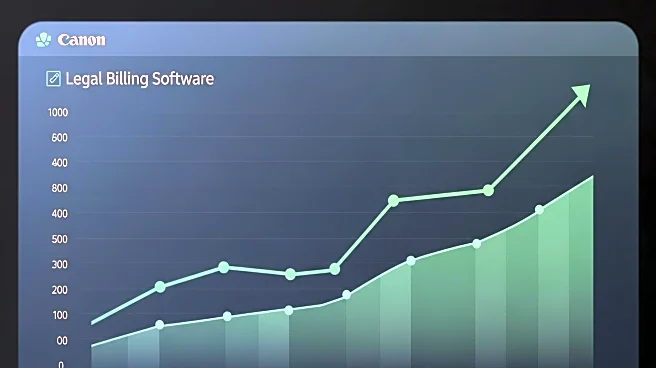What is the story about?
What's Happening?
The global workforce management market is anticipated to grow significantly, reaching approximately USD 9.8 billion by 2032, with an estimated compound annual growth rate (CAGR) of 11.3% from 2025 to 2032. This growth is driven by the increasing adoption of digital workflows, flexible work policies, and real-time analytics. Workforce management systems are becoming essential tools for managing teams, especially in the context of remote and hybrid work environments. These systems offer smarter and more connected tools for daily operations, including tracking schedules, productivity, and performance. Cloud technology, automation, and artificial intelligence are key components powering modern workplaces, simplifying tasks such as attendance tracking, leave approval, and team performance monitoring. Small and medium-sized enterprises (SMEs) are rapidly adopting these solutions due to affordable cloud subscriptions and mobile-friendly applications, which help streamline communication and manage attendance effectively.
Why It's Important?
The expansion of the workforce management market is crucial as it reflects the broader shift towards digital transformation in business operations. By leveraging cloud, automation, and AI technologies, organizations can optimize resources, enhance operational efficiency, and improve employee satisfaction. This trend is particularly beneficial for SMEs, which can now access sophisticated management tools without the need for extensive HR infrastructure. The adoption of these systems is expected to improve productivity and employee engagement, as businesses recognize the importance of motivation and support in driving performance. As industries such as IT, telecom, healthcare, retail, banking, and manufacturing expand their use of workforce management systems, they are likely to experience enhanced efficiency and employee engagement, contributing to overall economic growth.
What's Next?
The workforce management market is poised for continued growth, with North America holding a significant market share due to its advanced digital infrastructure. The Asia-Pacific region is expected to experience the fastest growth, driven by increasing digital adoption and awareness of workforce analytics. As mobile accessibility and AI-driven forecasting become more prevalent, organizations will be better equipped to predict demand, optimize staffing, and minimize productivity gaps. The focus on hybrid work support will ensure teams remain coordinated regardless of location, further enhancing the appeal of workforce management solutions. Companies investing in these technologies today will be well-positioned to meet future challenges and enhance overall productivity and employee experience.
Beyond the Headlines
The evolution of workforce management systems from routine administrative functions to strategic advantages highlights the importance of digital transformation in modern workplaces. As organizations continue to adopt advanced solutions, they will gain better insights into their workforce, optimize resources, and ensure smoother operations. This shift not only improves operational efficiency but also enhances employee satisfaction, which is closely tied to productivity. The growing focus on employee engagement underscores the recognition that motivated and supported employees are key to driving business success.
AI Generated Content
Do you find this article useful?













